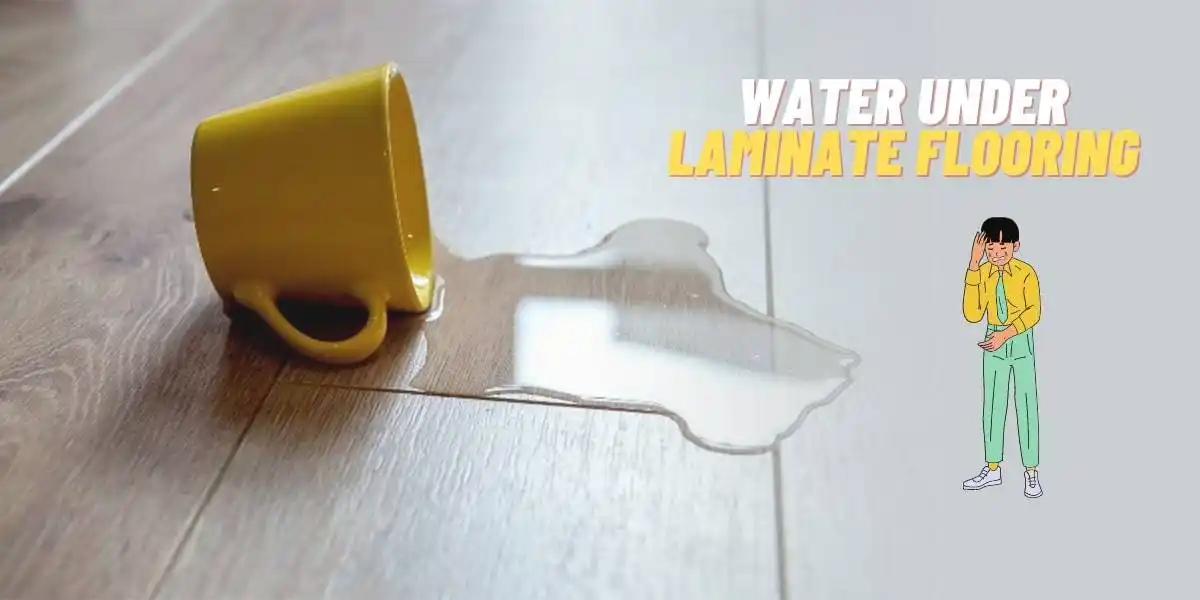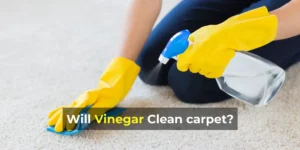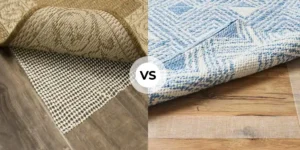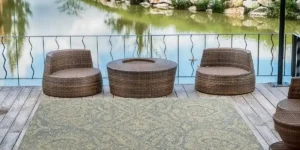Laminated floors are usually built on a level basis. They have an interlocking system of divisions. So, this makes installation easier and faster.
But here is a twist: When for some reason water gets between seams or layers, it can lead to many problems.
You may know, water is not just a risk to your home. It can also be a nightmare for your flooring.
When water leaks under the laminate flooring, it is important to dry out quickly. Otherwise, the moisture will cause warping and damage your floor. So, the quick step is to mop out all the excess water from the outer surface.
After that, you can follow these steps to dry water under laminate flooring.
In this guide, we’ll walk you through the simple steps on how to dry water under laminate flooring. This helps protect your floor from damage and will give you peace of mind.
Symptoms of Water Damage on Laminate Flooring
If water makes its way into the structure of laminate flooring, it can cause serious damage. The water can seep in deep and cause bubbling or buckling, which will ruin the flooring.
The best way to prevent water damage is by installing a high-quality underlayment or moisture barrier. But sometimes, the damage has already been done, and you need to resolve it as soon as possible.
Suppose you are experiencing any of the following problems. In that case, there is a good chance that water has started damaging your floors.
The water issues such as:
- Buckling
- Warped boards
- Cracking
- Bubbling
- Peeling
- Soft Spots
- Swelling
- Musty Odors
- Discoloration or Hazy appearance
What Happens If Water Gets Under Laminate Flooring?
Whenever water gets under laminate flooring, it soaks into the boards.
Although, the top layer of laminate flooring is water-resistant. Yet, the materials beneath it are not. Water can penetrate the material and cause it to expand and warp over time.
Despite laminate flooring not having much airflow, moisture can remain trapped.
Also, water can damage the floorboards. It can also harm the padding and subfloor under the laminate, causing further damage. Plus, it can cause mildew and mold to grow.
How To Dry Water Under Laminate Flooring?
Step 1: Locate the Source of Water
Water can be dangerous to laminate flooring. If it leaks under the flooring, it can damage the top layer.
Identify where the water is hanging out. Look for damp or puddled areas on the floor. Take immediate action if your floor gets wet, or even just one part of it.
Step 2: Dry the Surface Moisture
The outer surface of laminate flooring must be cleaned if water accumulates. It prevents moisture from soaking under your floorboards.
Grab some towels. Lay them over the wet spots and press down. The towels will soak up the water, acting like thirsty sponges.
Use a thicker towel to quickly soak a spill. Place your piece of cloth directly onto the spill and allow it to soak without pushing it.
Step 3: Utilize Large Fans or Dehumidifiers
Try to dry your floor with fans and dehumidifiers. A dehumidifier will eliminate moisture from the air. Fans will improve air circulation and speed up drying.
Apart from speeding up the drying process, these will also help to prevent mildew and mold.
Also, it is smart to introduce a space heater or use an HVAC system. This speeds up the drying process, which adds warmth and speeds up evaporation.
Step 4: Gentle Lift-Up
If the water is stubborn, gently lift the laminate. Peel it back a bit to allow the floor underneath to dry. But be careful not to damage it.
And if you have laminate planks start by removing the trim on the groove side of the board.
And then removing the boards one at a time. If your flooring is the locking type, you might need a tool like a putty knife to help unlock and lift the boards.
Only the first row will need some difficulty; the rest will come out easily. Keep the dry boards separate from the wet ones to keep them dry. This step allows air to reach the bottom, aiding in the drying process.
Step 5: Dry the Wet Flooring
Once you have removed the floorboards, place them near a fan or dehumidifier. This will speed up the drying process.
Patience is key here – the longer you leave it out, the more chance you’ll have of removing that bad moisture.
Also, make sure the removing boards are placed flat to prevent warping. An unused board is unusable depending on the extent of water damage. A warp will only make reinstallation more difficult.
Reinstalling that laminate floorboard will destroy nearby boards if the bend is extreme. So, replacing the board is the advisable option.
Step 6: Clean the Underlayment
Laminate flooring is typically installed over an underlayment for padding. If you have laminate flooring with underlayment, you need to clean the surface to remove any moisture. Although the pads are water-resistant, not all are waterproof.
Hence, you should check under the pads for any moisture that might have seeped through. Failure to do so increases mold growth and damages your floor. If the underlayment is severely damaged, the only option is to replace it.
Step 7: Disinfect the Subfloor
Disinfect the subfloor based on the type of spill. If the spill is not water, you can use ammonia-free dish soap and warm, clean water.
You can also clean your subfloor with a bleach solution. This can tackle odors and prevent mold growth. The subfloor should be completely dry after disinfecting.
If it has been damp for some time, showing signs of damage, replacing it may be the most effective option. This step ensures a clean and healthy foundation for your flooring.
Step 8: Disinfect Your Floorboards
Now that the floorboards are dry, it’s time to disinfect them. Mix ammonia-free dish soap with warm water, but do not soak them while you clean.
Afterward, dry them with a clean cloth and then use bleach to disinfect them. Check your laminate floorboards for damage such as warping, delamination, cupping, and bulging.
It indicates that your laminate floorboards are too damaged for reuse. So, separate the damaged boards from the ones in good condition. This will help determine the number of floorboards that need to be replaced.
Step 9: Reinstall Both the Flooring and Underlayment
Before reinstalling the flooring, the old underlayment must be repositioned. Use adhesive tape to hold the underlayment in place.
When you are installing brand-new underlayment, follow the manufacturer’s instructions. Plus, check where the pads stick to the walls and attach the points.
Reinstalling laminate flooring is easy. If the damage is not extreme and each board is reusable, you can place each board in the same position. If you are installing brand-new laminate flooring, you might have to trim the boards to fit in place.
FAQs: How to Dry Water Under Laminate Flooring?
How long does it take laminate flooring to dry?
After intense cleaning, a laminate floor can dry for two to three days. Laminate being a dense fiberboard, will take quite some time to dry.
If the damage on your floor is severe, It can take about a week to dry. Unfortunately, after drying sufficiently, laminate flooring will not regain its original form.
How long does it take for mold to grow under my wet laminate?
Within 48 hours, mold will grow under your wet laminate. Laminate flooring is better and more beautiful than carpeted or hardwood flooring. But, it still needs maintenance. If it comes into contact with water, mold will automatically grow.
How much water can Laminate flooring take?
The edge of your laminate base can handle about two hours of submerged water exposure. But, after that, the laminate flooring starts to soak water, causing it to bubble up.
Read More on Laminate Floors
- Laying Laminate Flooring: 13 Common Mistakes to Avoid!
- How to Protect Laminate Flooring from Rolling Chairs? (5 Best Ways)
- How to Stop Bed Moving on Laminate Floor? (9 Best Ways)
- How to Remove Candle Wax from Laminate Flooring? (4 Easy Steps)





